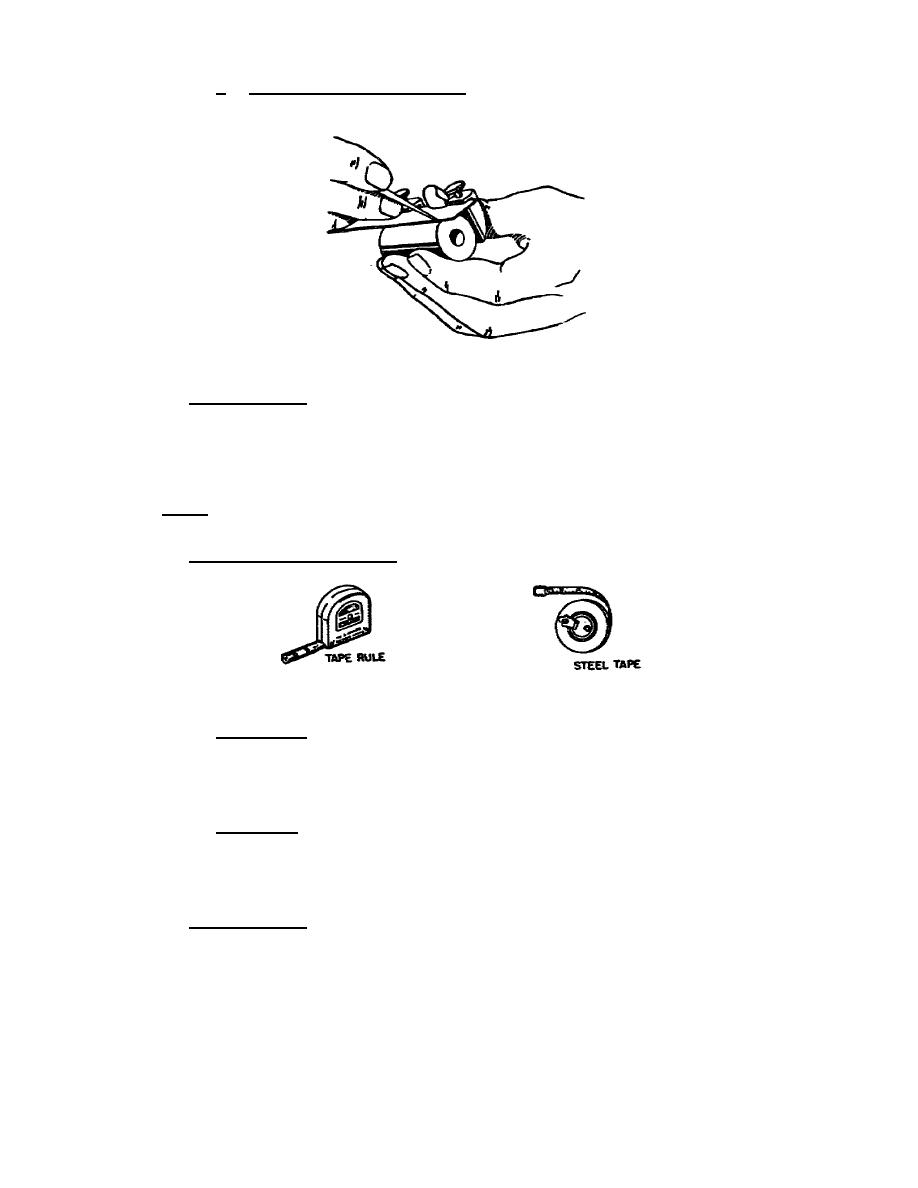
4. Key seat clamps and rule. Figure 48 illustrates the method of
scribing a line on cylindrical stock, using key seat clamps and rule.
Figure 48.
Using key seat clamps, rule, and scriber.
(3) Care of rules. Coat all steel rules with a rust-preventive compound or
oil before storage. Make certain wood rules are stored in a dry place and are
properly wrapped to preserve the wood. Clean rules before and after use, so that
graduations are always legible. Periodically, check straightedges against a master
surface plate for accuracy. The slightest nick will result in an incorrect
reading. Do not use rules for purposes other than those intended.
c. Tapes. Tapes are used for measuring long distances and circumferences
where rules cannot be applied.
(1) Types of tapes (fig 49).
Figure 49.
Tapes.
(a) Steel tape. Steel tapes are made from 6 to 100 feet in length. In
the shorter lengths, they are frequently made with a curved cross section so that
they are flexible enough to roll up, but remain rigid when extended. Long, flat
tapes require support over their full length when measuring or the natural sag will
cause an error in reading.
(b) Tape rule. The tape rule is a ribbon of flexible steel that is wound
into a flat metal case by pressing a button or pushing it in by hand. A hook is
provided at one end to hook over the object being measured so that one man can
handle it without assistance. On some models, the outside of the case can be used
as one end of the tape when measuring inside dimensions.
(2) Care of tapes.
(a) Tapes should be handled carefully and kept lightly oiled to prevent
rust. Never allow the edges of measuring devices to become nicked by striking them
with hard objects. They should preferably be kept in a wooden box when not in use.
41



 Previous Page
Previous Page
